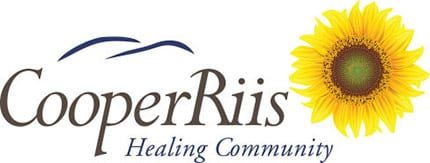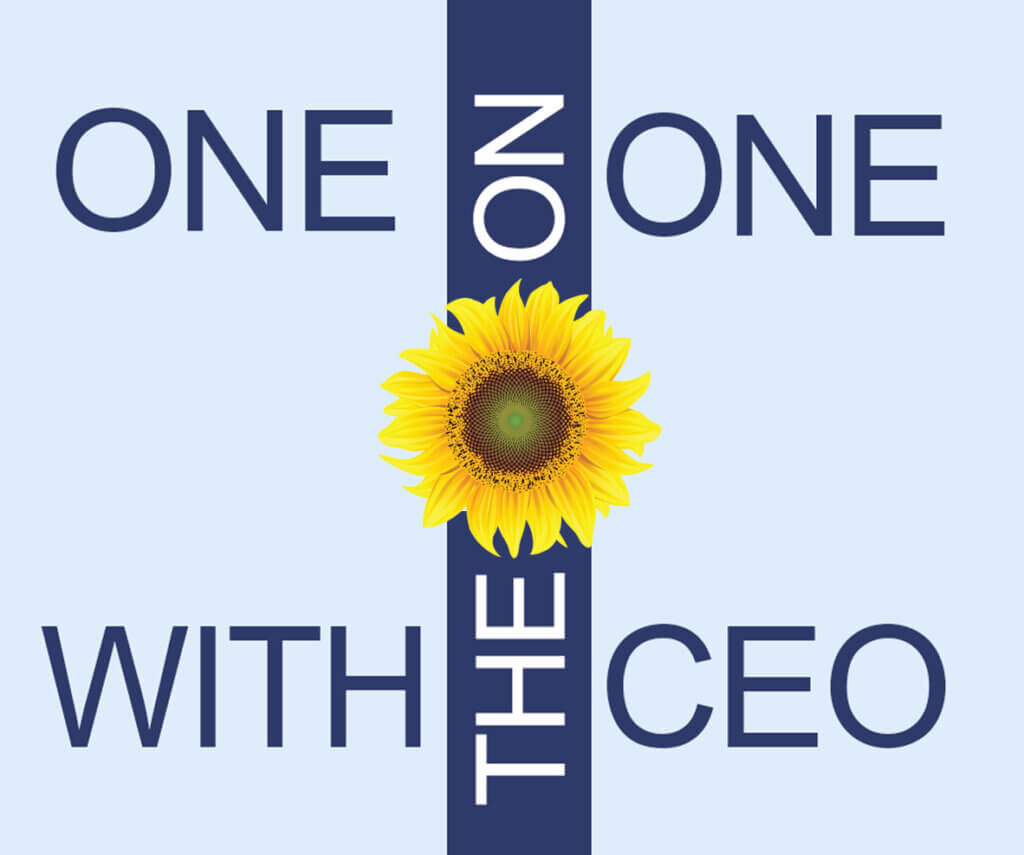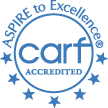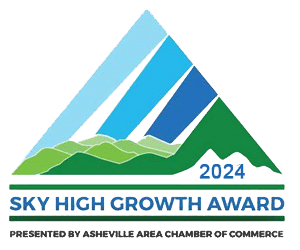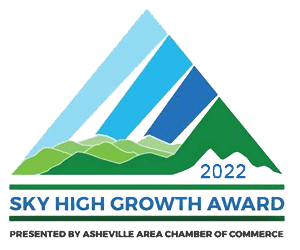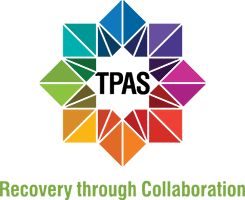
“…we’re focused on really getting to know the individual, what’s important to them, what are their values, what are their dreams and hopes, and that is the basis of the map for their time here.“
Lisa Schrader Schactman, Ph.D.
Chief Program Officer
Read the entire transcript below:
[ERIC] Thank you all for joining for a brief conversation with Lisa Schactman. Lisa Schactman is the chief program officer here at CooperRiis and she is the expert on our recovery model, which is really the foundation of how we do what we do here at CooperRiis. I’m thrilled that she’s agreed to join us for a brief talk about what we do. Lisa has been at CooperRiis for 17 years. She oversees each of our three programs within our integrated service delivery model: that being The Farm, CooperRiis at Asheville, and the Asheville Community Program, which includes our five semi-independent and transitional living homes as well as our new Partial Hospitalization Program.
So that said, she is important to CooperRiis and just a wonderful person. So, the foundation of our treatment approach is the recovery model with an emphasis on person centered partnerships with the people we serve. Can you talk a little bit about this approach and how it is woven into someone’s day to day experience?
[LISA] Absolutely! And thanks for inviting me today, Eric. It’s a pleasure to talk about this subject. It’s, just really important and was what drew me to CooperRiis in the first place and keeps me here. I really believe in our Mental Health Treatment Recovery Model. And so, you know, when we talk about the recovery model and how we use it in the day-to-day work that we do with our residents and community members, I always like to just start with- when someone comes for admission and they join the program, our conversations are really based on what matters to you. So, we’re focused on really getting to know the individual, what’s important to them, what are their values, what are their dreams and hopes, and that is the basis for the map for their time here.
Creating a roadmap, which we call the recovery plan, starts with a dream statement, and that happens in conversation with their clinical team. And, from there is basically where all their goals and objectives and the work that they’re going to do with CooperRiis- that is all derived from that one dream statement.
A more medical model would focus on the problem statement, and what’s wrong, and how to fix it. And, for the recovery model, we don’t believe that people are broken and need to be fixed. We believe that folks have everything they need internally. They have all the resources and wisdom that they need, to have a healing journey and to recover from a mental health condition.
We are just there to help them explore what that is and help set goals and some structure to what that journey looks like. But they’re really walking- we’re walking in partnership with each individual and we really value the internal wisdom and the information that someone has to share with us, really deeply listening to that and reflecting and helping someone along their journey.
What Is The Mental Health Treatment Recovery Model Approach?
Normality Through Independence With Accountability
[ERIC] So along those lines, we work in behavioral health and sometimes it can be challenging to coexist with each other in a community where not everything is okay all the time. Is it true that, with the Mental Health Treatment Recovery Model approach, that it’s ‘everything is cool and accepted’ and no accountability for behavior?
Obviously, we’re not into punishment. How does that all kind of weave into, to what we do here? Is it a, you know, a free for all? What’s the deal here?
[LISA] It’s not a free for all. That can be a challenge, especially for folks that have worked in a more medical model setting, because it can feel like when you’re talking about person centered and the self determination and that we are working with someone to help figure out, help them figure out what decisions, what choices they have, how to make those choices for themselves. So, there’s a lot of work that goes into educating the staff and helping folks understand the nuances of that. And so, there’s one of the recovery gurus in the country, Pat Deegan, who has a course and there’s a continuum of ‘the dignity of risk and the duty to care’. And so, really, if you’re looking at any decision that an individual might make, we have a responsibility and we’re in the recovery model, we would approach any decision that we’re concerned about with a process of exploration of simple things like pros and cons lists, but there’s also a lot of creative thinking and challenging behaviors in a way that still allows that individual to hold on to their independence- to have agency.
“…helping find that middle ground so we’re not being overprotective. We’re not being neglectful, but we’re meeting someone in the middle…”
Lisa Schrader Schactman, Ph.D.
Chief Program Officer
We’re not there to tell someone what to do, but to help guide and educate about some consequences and what those consequences might look like to those decisions. And sometimes we do have to hold hard boundaries. But on one hand, we’re not going to just tell someone ‘Oh, you’re going to make that decision’. We’re just, {ed. saying} we’re not going to support you anymore. So that would be more of the neglect side. And the other side would be, ‘well, if you make that decision…you want to make this decision, we don’t agree with it. You can’t do that’. That would be like an overprotective, like we’re really squashing the independence in that.
So, it’s about kind of helping find that middle ground so we’re not being overprotective. We’re not being neglectful, but we’re meeting someone in the middle and helping that person to think about that decision, but also just decisions moving forward. It’s not about that one moment, but it’s about how you might make decisions in the future, because we’re with someone for a small period of time in their life.
And so, a lot of the time we’re planting seeds and we’re trying to help someone maybe adopt- or explore what it might be like to adopt- some different ways of thinking or different ways of being in the world. Most of the folks that come to CooperRiis, they’ve had some difficult times. They may have had challenges with decision making in the past or, you know, things that haven’t gone well. And so, challenging some of those old patterns and behaviors, and looking at a new, maybe something new that is a hard process and we’re aware of that. And so we want to do that with compassion, but also with clarity and directness as well.
“Sometimes it’s good. Sometimes it’s not so good, but the effect of a natural consequence is much more powerful for all of us than some external force coming in and wagging a finger…”
Eric Levine, Ed.D.
President and CEO
Therapeutic Horticulture in the Mental Health Treatment Recovery Model
Mental Stability And Connection Through Plants And Nature
[ERIC] So the, the cross section, or the crossover- I love the concept of dignity of risk and the cross section between that and natural consequences because that’s really what you’re talking about, because everything we do has a reaction in the world. Sometimes it’s good. Sometimes it’s not so good, but the effect of a natural consequence is much more powerful for all of us than some external force coming in and wagging a finger …, that’s something that attracted me to CooperRiis – just the philosophy of working with people. Your background is in horticultural therapy. I know you have a PhD, but you also have your master’s in horticultural therapy and in your many different roles here, you often talk about how much joy you found working in the greenhouses and working in the gardens. What’s your takeaway from all of that? How has that informed who you have become in your role as Chief Program Officer here at CooperRiis?
[LISA] Yeah, the work, the connection to nature I think is powerful. I think that it can be woven into our everyday life. If you look around my office, I have probably eight plants in here. I think it’s an important part of who I am. But I also feel like a lot of folks really can connect with plants, with nature. There are metaphors galore. I already used one, which is planting the seeds. You know, when people are- our folks are at CooperRiis- a lot of times we’re planting seeds and I use that all the time because it can be difficult for staff and for residents if you’re not seeing the progress that you were hoping to see, or if, you know, we’ve done a lot of work in our staff. They’re so invested in each person that comes to CooperRiis’s recovery journey.
It’s so incredible. But that can make the work really challenging if you’re reaching out and reaching out and doing this work, and the person is maybe not in the right place yet to accept, maybe making- doing something different or making choices that aren’t going to continue to keep them in a place that they’re not able to achieve the dreams that they would like to achieve. That can be challenging. And so just reminding ourselves that a lot of times, it is about planting seeds and, in the future that seed is going to germinate and grow into something beautiful. We don’t always get to see that. And that’s hard as a person who’s really invested in someone’s journey and, you know, who they’re going to become as they grow and mature. So, keeping that in mind, I think has been really important. And I do talk a lot about that with folks.
And then thankfully we do hear back from former residents. And, you know, there’s a former resident that’s done several talks with our current residents and she’ll say outright like, ‘Oh, I pushed back a lot and y’all were so- you had to be frustrated with me- but I didn’t know it’, which is good that, even if there were frustrating times, she wasn’t experiencing that, but she could reflect back. And she took a lot of what she learned and finds it really valuable now in retrospect and can also talk and can really eloquently speak to that, which is really cool. So sometimes we do get to hear how those seeds germinated for someone moving forward.
I think the other thing with just plants and nature- we all just need to feel really connected. That’s another big part of what CooperRiis is community connection. Isolation and folks that have been marginalized and not felt a part of a community – that loneliness– that’s also so prevalent with folks with mental health conditions, and really leads to a lot of negative feelings and, just that innate experience of feeling really alone in the world. Working with plants, being connected with nature, you feel just part of something bigger than you. And so, I really liked that part of working with plants and just connecting people with the natural world also.
It can just be very healing. It can be something that is very accessible. You can just walk outside and there’s something you can pay attention to that can take you kind of outside of yourself and appreciate something that, maybe is beautiful and very simple.
So, there’s a lot of really nice ways to utilize it. The natural world and connection that doesn’t have to be officially like horticultural therapy, but I just call it like therapeutic horticulture or nature that I use in my everyday work all the time.
[ERIC] Wonderful. We could probably spend hours on the Mental Health Treatment Recovery Model and certainly horticulture or the therapy of horticulture, but we’re out of time. I know that you do a two-hour training on the recovery model so we can put that up on our blog post as well.
Thank you for everything that you do and thank you for the fun conversation. Until next time, thank you everybody.
